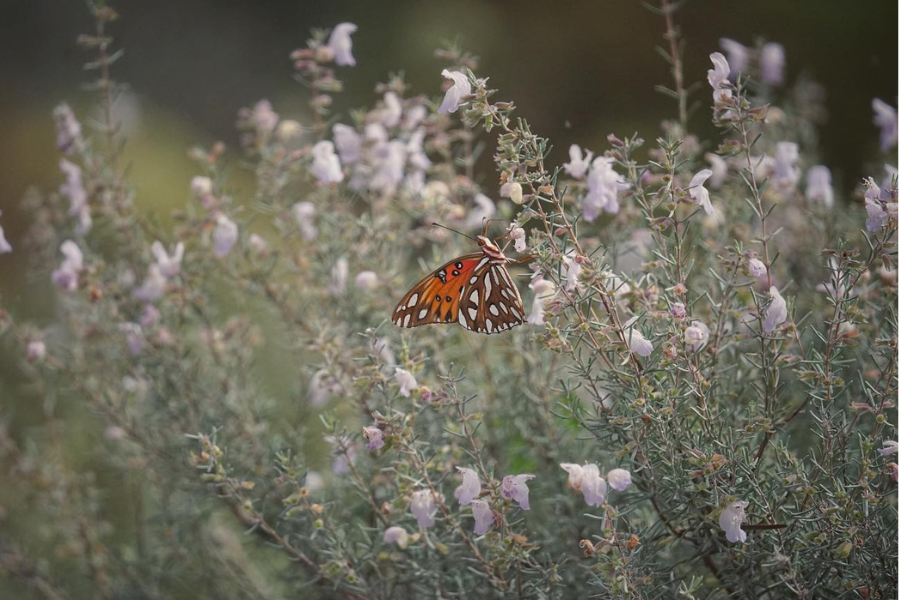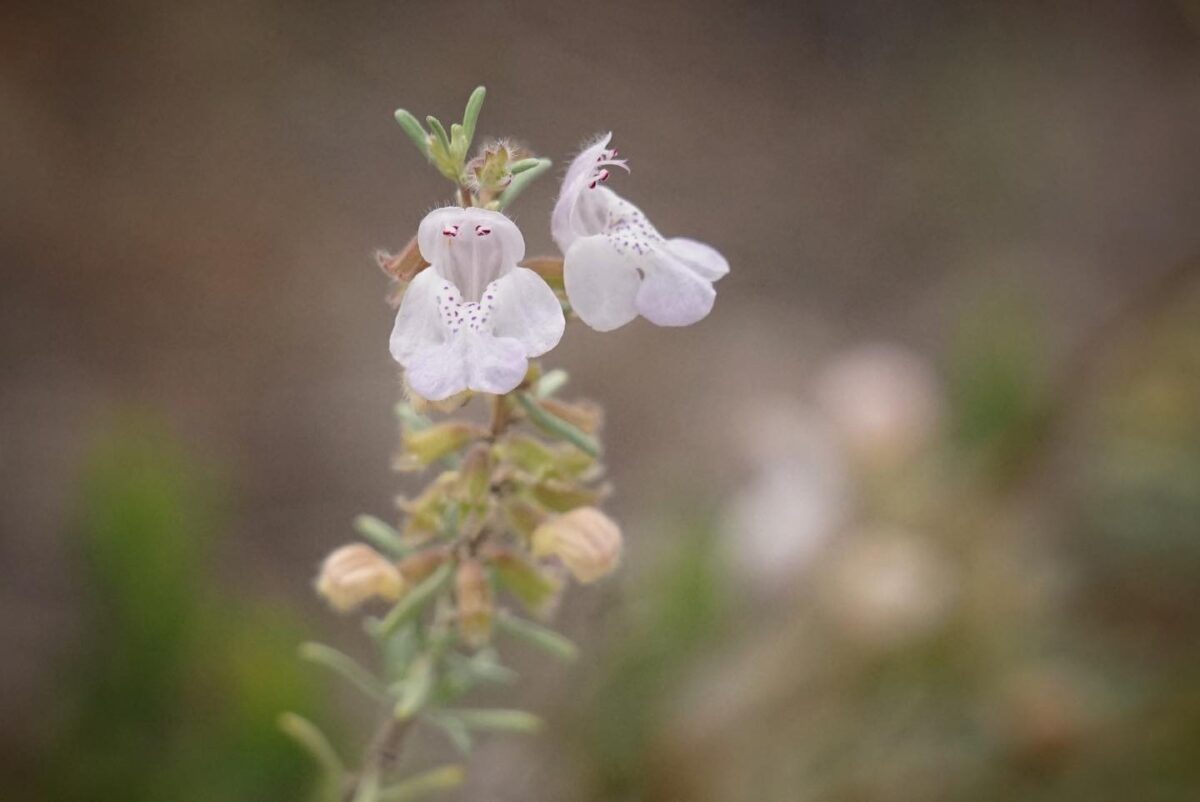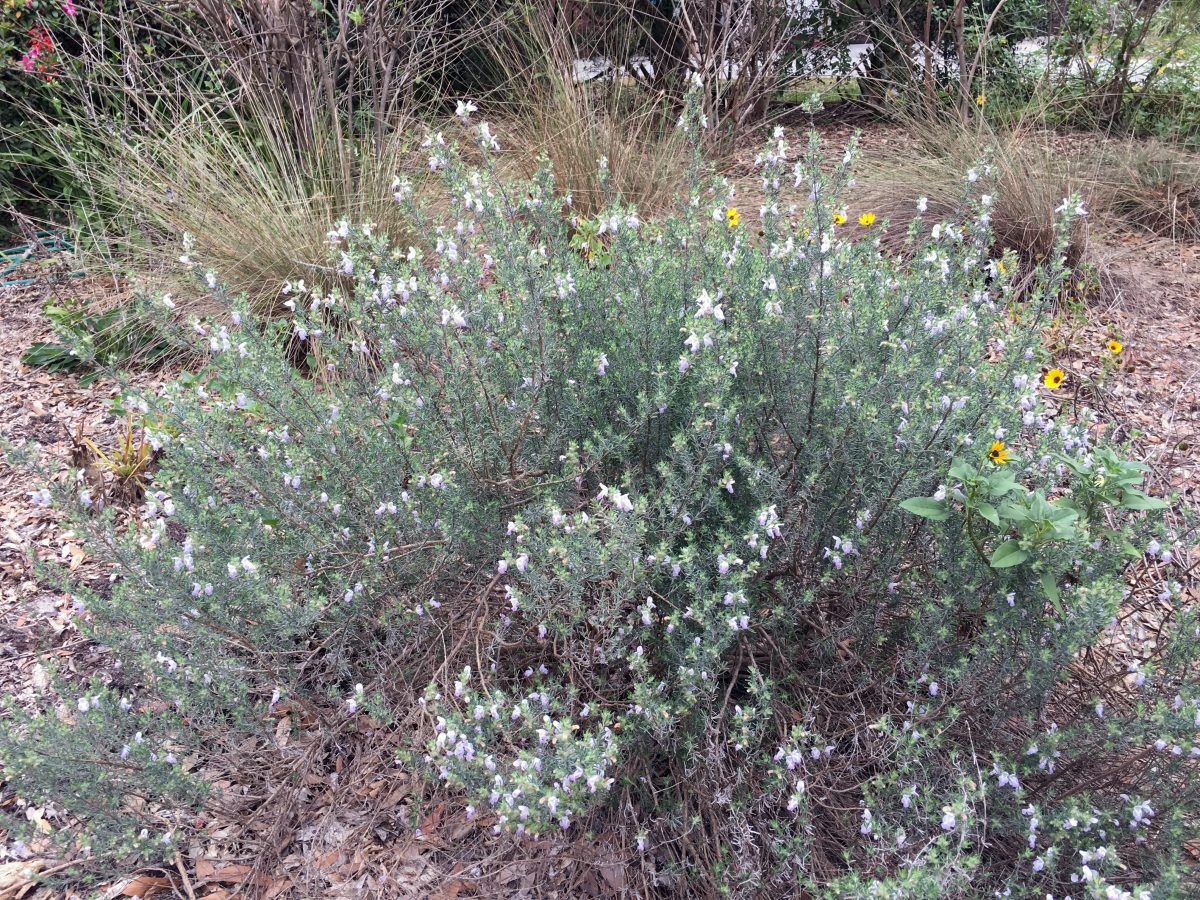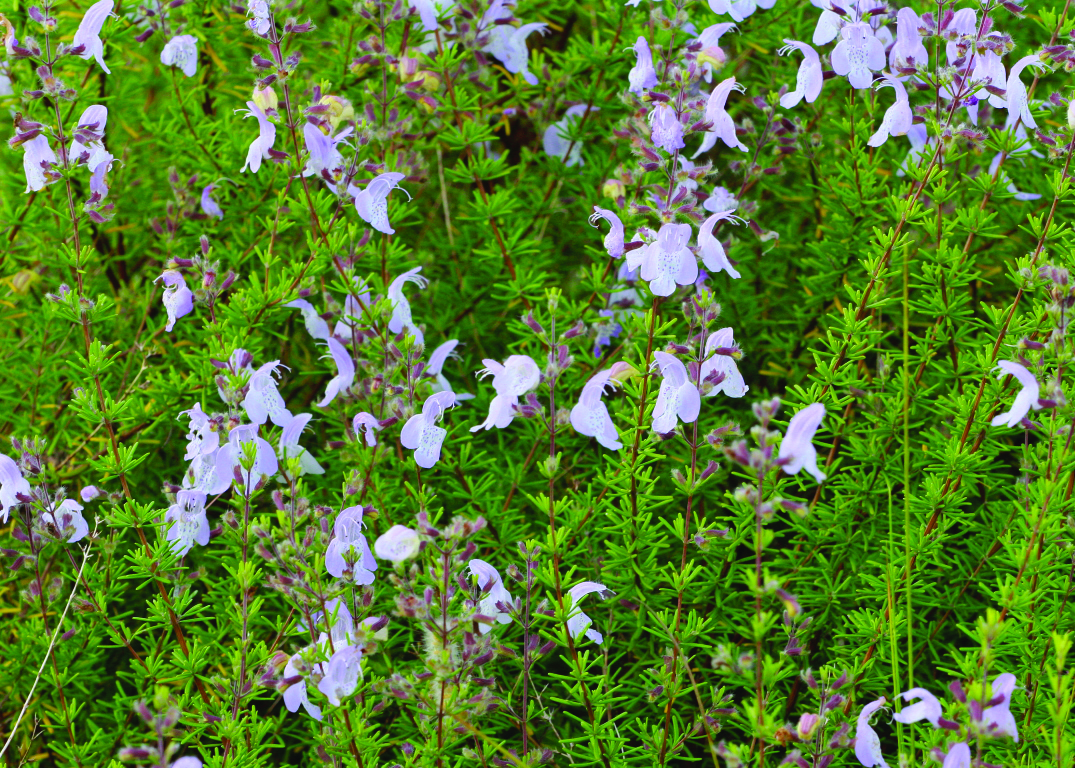False rosemary
Pictured above: False rosemary (Conradina canescens) by Emily Bell. Click on terms for botanical definitions. View post as a PDF.
False rosemary (Conradina canescens) is a robust, evergreen flowering shrub that rewards gardeners with a display of fragrant flowers. It typically blooms from March through November, but can flower year-round. It occurs naturally in sand pine scrub and sandhills. Many pollinator species are attracted to False rosemary, but bees are its most prominent visitor.
Flowers are purplish-white and two-lipped: the lower lip is three-lobed and bears dark purple spots. Stamens are prominent and run along the inside of the upper lip. Sepals are fused and finely pubescent. Leaves are short and needle-like with a grayish- or silvery-green hue. They are oppositely arranged and grow densely from upright stems that branch from a main woody stem.
False rosemary plants may look like their namesake cousin, whose leaves are used as a savory cooking spice, but these members of the mint family emit a minty-fresh smell when their leaves are crushed.
The species epithet canescens comes from the Latin canescere, meaning to turn white or gray. It refers to the fine, whitish hair covering the calyx, corolla and leaves.
Of the six Conradina species in the state, all but C. canescens are endangered or threatened and thus limited in population. Because these species can hybridize, it is important to plant the species found naturally in your area to help preserve the distinct genetic identities and ecological roles of these plants. False rosemary (C. canescens) is only appropriate for use in North Florida.
Family: Lamiaceae (Mint family)
Native range: Western Panhandle (Escambia, Santa Rosa, Okaloosa, Walton, Washington, Bay, Jackson, Gulf, Franklin and Wakulla counties)
To see where natural populations of false rosemary have been vouchered, visit florida.plantatlas.usf.edu.
Lifespan: Perennial
Soil: Extremely dry, sandy soils
Exposure: Full sun
Growth habit: 2–3+’ tall
Propagation: Seed, cuttings
Florida regions of landscape suitability: North
Garden tips: False rosemary is drought tolerant, however, in the landscape setting, it may require additional water during extreme droughts. Otherwise, it is an extremely adaptable species that can make a nice addition to a home landscape.
False rosemary plants are often available at nurseries that specialize in native plants. Visit www.PlantRealFlorida.org to find a native nursery in your area.
Learn more about False rosemary from the Florida Native Plant Society and the Institute for Regional Conservation.
For information on other Conradina species, see these resources:




